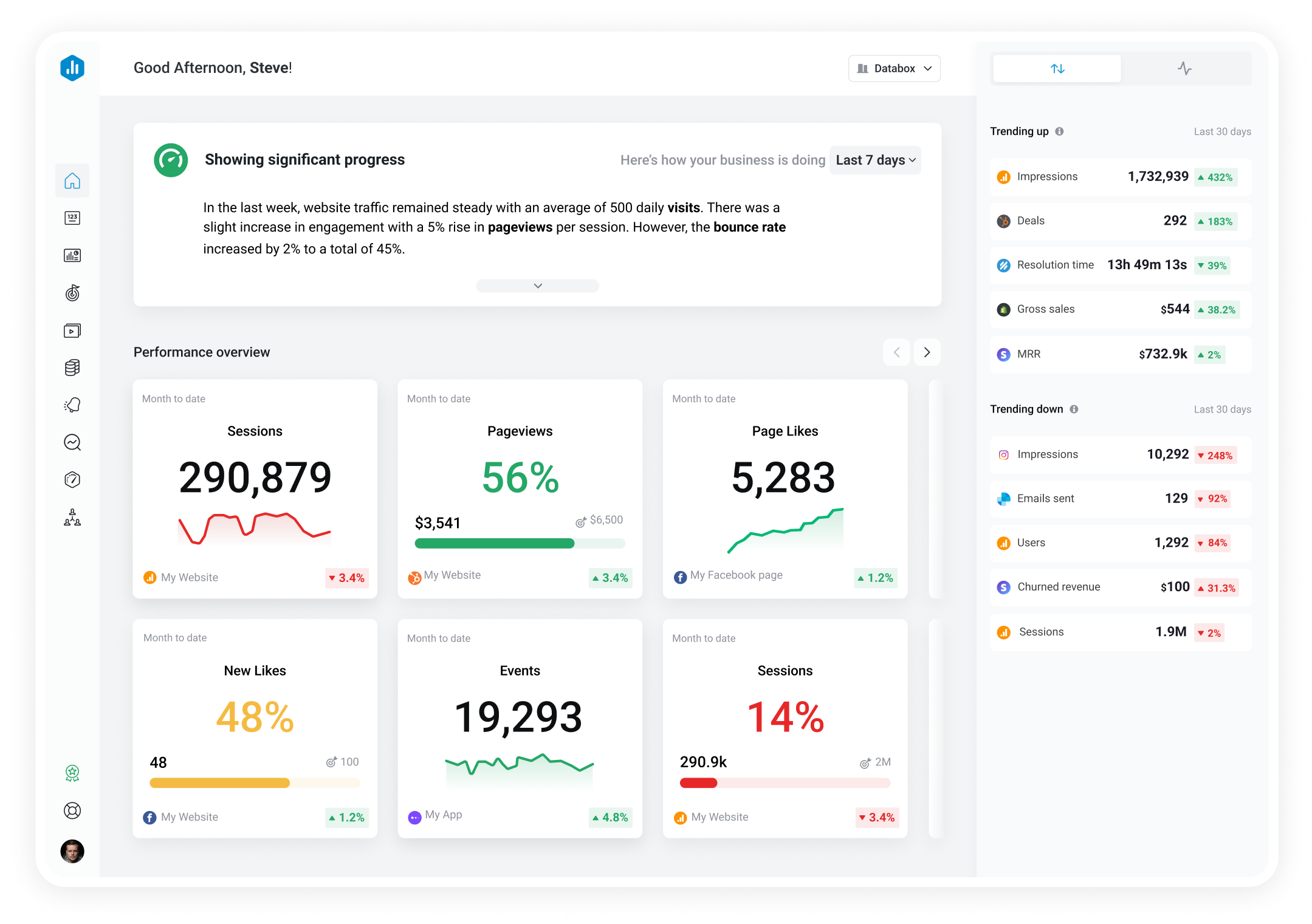Track all of your key business metrics from one screen
GET STARTED
 ActiveCampaign
Contacts
ActiveCampaign
Contacts Contacts represent individuals or organizations present in your ActiveCampaign account who have opted in to receive communication from you. The Contacts metric tracks the number of unique email addresses or unique individuals/organizations in your account.
With Databox you can track all your metrics from various data sources in one place.
Contacts refer to the number of unique individuals or entities in a company’s contact database or customer relationship management (CRM) system, who have interacted or engaged with the company through different communication channels: email, phone calls, web forms, social media, and other.
The Contacts metric consists of potential and current customers, partners, vendors, and other relevant individuals the company interacts with.
To calculate Contacts, you can use this formula:
Contacts = Number of Unique Individuals or Entities in the Contact Database
Following this step-by-step explanation can help you apply the formula:
For example, say you attended a SaaS event and want to calculate the contacts you made. Your company had a booth where attendees could interact with your sales team. The team collected contact data by scanning badges, collecting business cards, or having visitors sign up for newsletters or product demos.
In total, they collected 300 email addresses. After reviewing and cleaning the data and using the formula, you may find that you have 250 unique contacts from the event.
There isn’t a good number of contacts that applies universally to all businesses. The ideal number can differ significantly depending on the factors such as the company’s size, growth stage, target market size, sales strategy, and type of product or service.
Here are some factors that affect the number of contacts suitable for a company:
To consistently acquire a good number of new contacts, here are three great practices to consider:
More resources to help you improve:

Used to show a simple Metric or to draw attention to one key number.

Used to illustrate numerical proportions through the size of the slices.

Used to show comparisons between values.
Databox is a business analytics software that allows you to track and visualize your most important metrics from any data source in one centralized platform.
To track Contacts using Databox, follow these steps:
 Goals
Goals Scorecards
Scorecards Metric Digest
Metric Digest Metric Builder
Metric Builder Data Calculations
Data Calculations Performance Screen
Performance ScreenThis dashboard gives you a full overview of all your ActiveCampaign marketing and sales metrics.

Marketing contacts are individuals or companies who willingly share their contact information for marketing purposes by opting-in to receive promotional content and updates from you.
Non-marketing contacts are individuals or companies on the company’s contact list who haven’t opted-in for marketing communications. These contacts are typically existing customers, partners, vendors, or contacts obtained through non-marketing channels.
The number of contacts needed before someone buys your product depends on factors like the product’s and purchasing complexity, target market, marketing and sales effectiveness, and buyer preferences.
Even though the number can vary, most sources claim that eight contacts are considered effective for achieving sales.
Your email list’s ideal number of contacts depends on your business goals, target audience, industry, and email marketing campaigns.
Our survey on the email list size that a B2B company should aim for showed that marketers considered 1,000 subscribers a good starting point, although suggestions ranged from 1K to 20K.
Databox is a business intelligence tool that helps you dive deep into data collected from multiple sources you can easily connect with your Databox dashboard. It allows you to analyze historical and current data, in-house and third-party data, and semi-structured and unstructured data for the most accurate insights about your business in real time.
With Databox, you can fully understand your performance and make well-informed decisions about your next actions. Build professional reports in minutes, visualize your key metrics (and custom ones for a more granular view) and monitor your progress towards your business goals. By getting an accurate picture of the business at a specific point in time, you’ll also get the means to design your strategy based on factual data instead of relying on guesswork.
